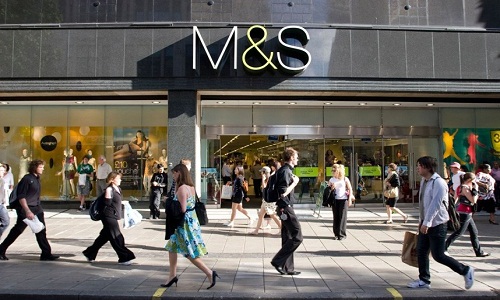"While China presents a huge opportunity for global brands with its huge consumer base, yet there have been instances where Western brands have failed to lure Chinese consumers. The recent case is that of Marks & Spencer which has exited online retail in the country. The company recently announced it would end online sales in China through Tmall store. Shaun Rein, MD, China Market Research feels one of M&S’ problems is they tried to sell to a middle-class consumer by creating a middle-class brand positioning. Most brands which take this approach in China, fail. That’s where Marks & Spencer failed. Also, sizes for Asian body types were not considered. At Marks & Spencer’s brick & mortar stores in Beijing and Shanghai, Chinese consumers could go right next door to H&M to shop for the youthful and trendy styles that attract millennials."

While China presents a huge opportunity for global brands with its huge consumer base, yet there have been instances where Western brands have failed to lure Chinese consumers. The recent case is that of Marks & Spencer which has exited online retail in the country. The company recently announced it would end online sales in China through Tmall store. Shaun Rein, MD, China Market Research feels one of M&S’ problems is they tried to sell to a middle-class consumer by creating a middle-class brand positioning. Most brands which take this approach in China, fail. That’s where Marks & Spencer failed. Also, sizes for Asian body types were not considered. At Marks & Spencer’s brick & mortar stores in Beijing and Shanghai, Chinese consumers could go right next door to H&M to shop for the youthful and trendy styles that attract millennials.
Another issue with Marks & Spencer is how Chinese shoppers perceive value. As Rein points out, Chinese consumer behaviour is defined by ‘CMR hour glass shopping model’, meaning they shop both at the top and the bottom of the spending scale. Anything that’s not great value it doesn’t give them importance, it doesn’t give them status, it’s not an aspiration is something that Chinese don’t want unless it’s dirt cheap.

Similarly, Britain’s Asos.com too faced issues. Asos left China in 2016 the same year Marks & Spencer shut all its China retail stores after losing out to Taobao, Alibaba’s Amazon-like e-commerce platform. Asos sold low-priced garments, but with limited products available in the China market, it just could not compete. Don Zhao, Co-founder and executive director, Azoya says in the West, Asos is mainly aimed at middle-class millennials. But in China, the fashion shopping behaviour from this group is for cost-value products, which typically are under 300 yuan. Asos was also slow at getting in new products in comparison with the UK market and used European and American models, whose body shapes are different from Chinese, making it difficult for consumers to compare and make decisions. None of these factors suited the needs of Chinese shoppers, who actively seek latest fashion products and aren’t willing to wait. In China, you have to act fast to adapt to consumers’ needs. While brands can use e-commerce as an alternative to brick & mortar stores to reach more consumers, there is not a one-size-fits-all solution for every brand.
Success Mantra: Market understanding and research
Localisation, marketing to cross-border Chinese shoppers, launching on multiple channels, and supply chain optimisation are some of the major issues that companies face. Besides, brands also have to keep local competition in mind. And to avoid any operational issues later, brands looking to start retail stores in China first need to first conduct a thorough research. According to Zhao, if a retailer is thinking about expanding to China, they need to spend more time and research on what they are looking for and have very clear expectations. While selling goods through Tmall and JD.com might seem like obvious solutions, they are not necessarily the right option for everyone.
Zhao says categories that have a low re-purchase rate, no functional features, too many Chinese local alternatives, low market-entry thresholds and unreasonable pricing over 30 per cent higher than overseas markets will definitely be challenged by Chinese competitors. Foreign luggage brands are being challenged by Xiaomi’s Youpin and NetEase’s Yanxuan alternatives, who share the same supply chain resources with international big brands.












